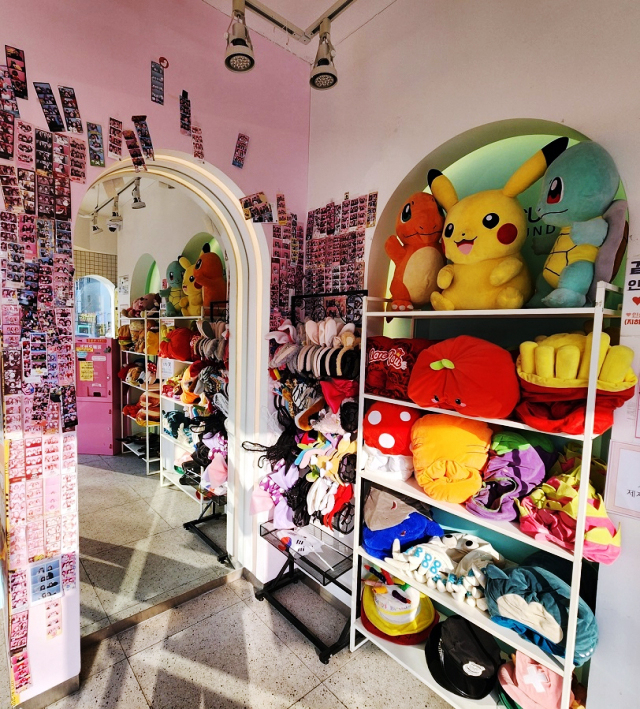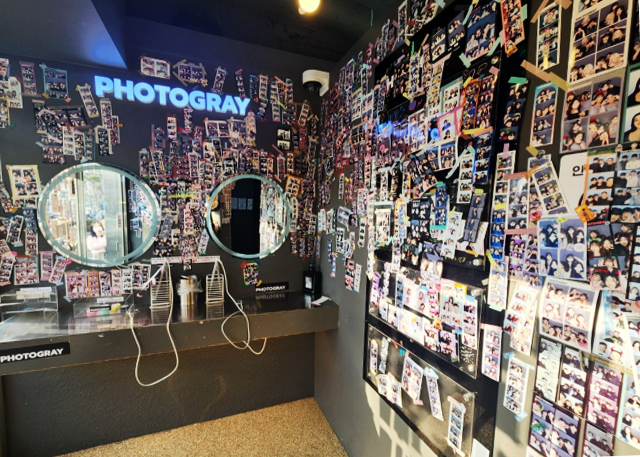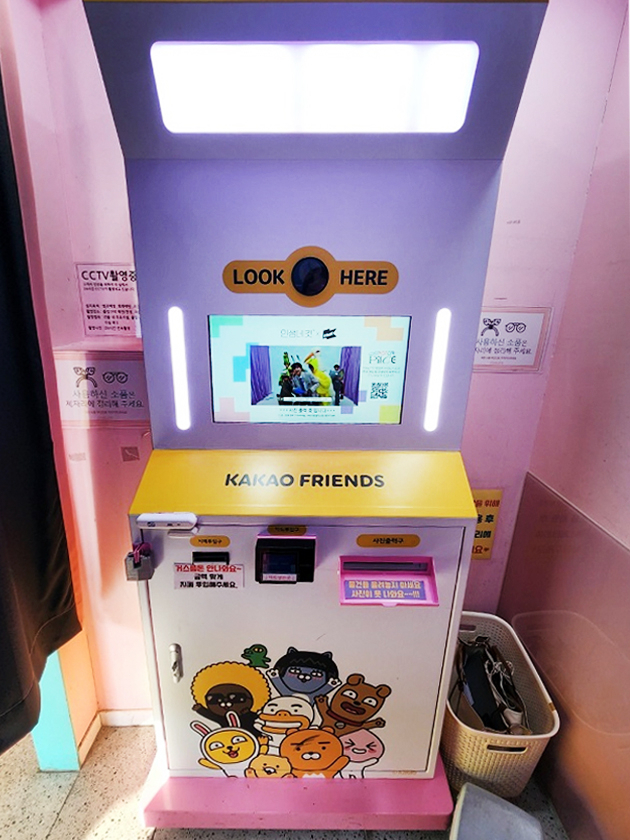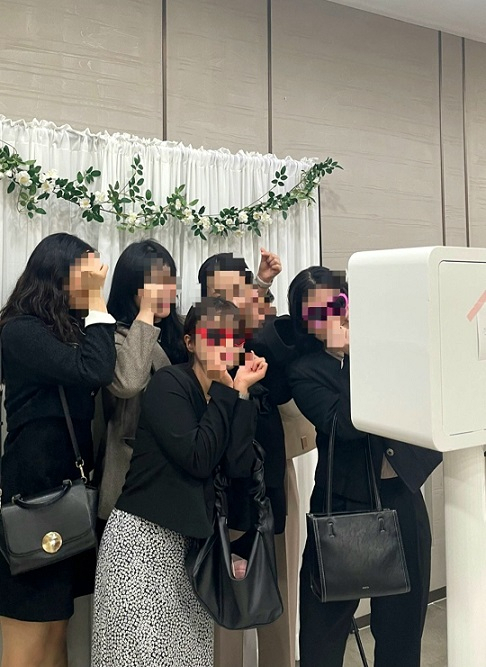
In Seoul’s Yeonnam-dong, a trendy neighborhood for young hipsters, a particular trend has taken over an entire street: instant self-photo studios popping up almost next to each other.
“Nine new self-photo studios have opened within just a few months in this area,” shared a person surnamed Hong who runs another such studio near Hongik University Station.
It was a Tuesday afternoon and the freestanding photo studios inside stores like “Life Four Cuts” or “Haru Film” were bustling with couples and families, all eager to capture memories of the beautiful spring day with a few still shots.
“I think taking instant snapshots has become a part of the younger generation’s entertainment culture these days. Most of our customers are teenagers and 20-somethings,” Hong said.
Photo booth photography, which enjoyed its first boom in the late 1990s, is making a comeback in Seoul.
In 2022, sales of instant photo booth franchises nationwide sharply rose by 271 percent from the previous year, while the number of new photo machines shops saw a 54 percent year-on-year increase, according to KB Kookmin’s analysis of debit card sales.

Inside Hong’s 16-square-meter self-photo store with three photo booths is an open space where customers can try out a variety of props and hair styling tools like handheld dryers and curling irons.
When this reporter visited, several customers -- all looking in their 20s -- were fixing their hair and applying makeup for a photo shoot. All of the photo booths were occupied.

At Hong’s place, each booth is equipped with one big machine that resembles a typical vending machine -- it has an automated camera with a touchscreen interface allowing users to adjust settings such as photo size and special effects.
The photo kiosk prints photos on the spot, usually in the form of four-image strips. Each photo shoot typically costs between 4,000-5,000 won ($3.08-$3.85), and the entire process of taking and printing photos takes less than five minutes.
For people in their 30s and 40s, instant photo booths are a nostalgic flashback to the late 90s and early 2000s, when photo sticker makers from Japan were all the rage in South Korea.
The photos were tiny instant prints with sticky backing and came with additional features such as beauty filters, various photo frames and the ability to add text.
But for the digital natives of Generation Z, the biggest appeal of instant photography is its analog element -- as old-fashioned printed images that cannot be freely edited or altered.
“Instant photography makes something tangible out of a fleeting moment. It is a fresh experience for consumers like me who grew up in the digital age,” said Jeong Na-yeon, 20, who recently entered college. Real photos bring about an emotional attachment that digital images on a screen cannot replicate, she added.
Lee Eun-hee, a professor of consumer science at Inha University said younger age groups have a stronger desire for self-expression, compared to their predecessors. But she added that instant photography had now also grown into a way to socialize.
“Photo booths not only offer photographs but also special moments where friends and family members can chat and laugh in private settings. Since taking photos there does not take much time and money, it has become an easily accessible entertainment activity for many,” she said.
Younger generations are also incorporating instant photography into special events such as weddings.
Typically, couples set up one or more photo booths with instant-print cameras where guests can take photos. The guests, then, put some of their photos on the guest book, with accompanying comments, creating a special photo album for the newlyweds. The photo strips also make a souvenir for guests to take home.

Lee Jae-kyung, a 29-year-old woman who tied the knot last week, said renting a photo vending machine was one of the best things she did for her wedding ceremony.
“After the wedding, many friends of mine told me they enjoyed themselves during the downtime between the ceremony and reception, which might have otherwise been a little dull. The photo machine I rented had an online connection, allowing users to email the photos or directly post them on social media. I’m glad that they could have keepsakes from my wedding,” Lee said.
A photo vending machine costs between 500,000 won and 800,000 won to rent, depending on the length of the rental, according to Banzzak, a local provider of photo vending machines specializing in corporate events or wedding ceremonies.
Amid the recent surge in the popularity of instant photos, the demand for photo printing has also been on the rise, which has led to the launch of self-service printing kiosks in convenience stores.
In January last year, CU, Korea's top convenience store chain, set up self-service printing kiosks called “printing boxes” in 30 of its branches across the country. The machines allow customers to print photos or documents from their PCs or smartphones by themselves.
According to BGF Retail, the firm behind the CU chain, the average monthly usage of printing boxes per store has increased nearly fourfold from 100 to about 400 cases over the past year. Teens and people in their 20s comprised nearly 70 percent of the total users.









![[Kim Seong-kon] Democracy and the future of South Korea](http://res.heraldm.com/phpwas/restmb_idxmake.php?idx=644&simg=/content/image/2024/04/16/20240416050802_0.jpg&u=)








![[KH Explains] Hyundai's full hybrid edge to pay off amid slow transition to pure EVs](http://res.heraldm.com/phpwas/restmb_idxmake.php?idx=652&simg=/content/image/2024/04/18/20240418050645_0.jpg&u=20240418181020)

![[Today’s K-pop] Zico drops snippet of collaboration with Jennie](http://res.heraldm.com/phpwas/restmb_idxmake.php?idx=642&simg=/content/image/2024/04/18/20240418050702_0.jpg&u=)